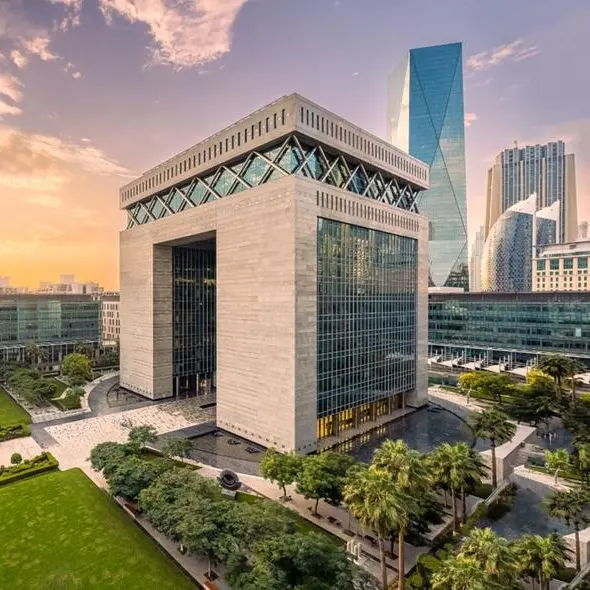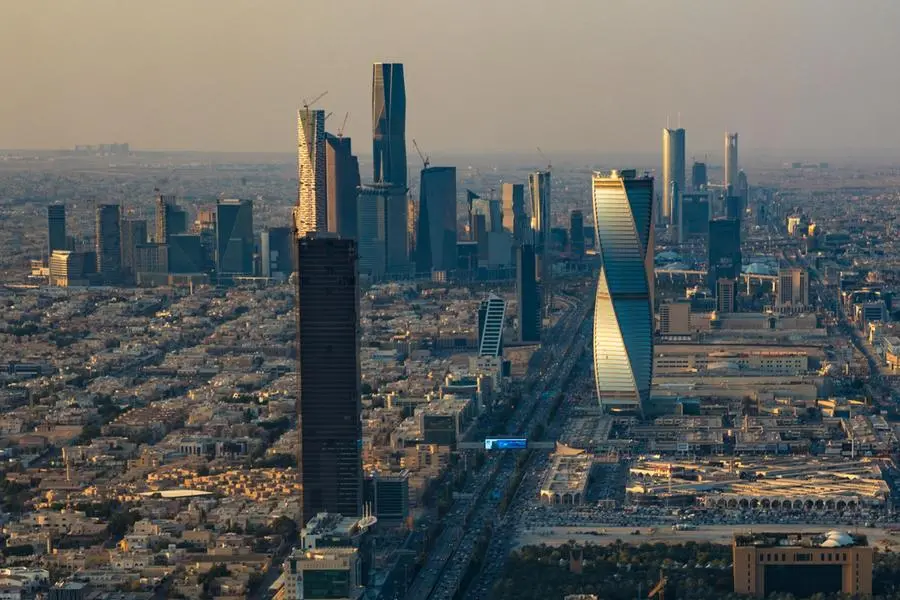PHOTO
* Oil traders price in risk premium as Saudi-Iran crisis deepens
* But oil markets remain oversupplied because of high production
* Benchmark Dubai physical crude falls to lowest since 2004
* Asian economic slowdown could hit oil demand
(Adds Dubai physical price, updates futures prices)
By Henning Gloystein
SINGAPORE, Jan 4 (Reuters) - Oil prices jumped in early trading of its first session in the new year as relations between major crude producers Saudi Arabia and Iran deteriorated, although tumbling Asian manufacturing and stock data kept a lid on bullish expectations.
Saudi Arabia, the world's biggest oil exporter, cut diplomatic ties with Iran on Sunday in response to the storming of its embassy in Tehran. The diplomatic row between the two major oil producers escalated following Riyadh's execution of a prominent Shi'ite cleric on Saturday.
But early price gains were reined in by concerns over Asia's slowing economies as China's main stock markets tumbled 7 percent and trading had to be suspended.
This followed reports that China's factory activity shrank for a 10th straight month in December and surveys across Asia showing industry struggling with slack demand.
Global oil benchmark Brent initially climbed over $1.2 to a high of $38.50 per barrel on Monday, before easing back to $37.48 at 0744 GMT, up 20 cents. U.S. crude's West Texas Intermediate (WTI) futures were up 29 cents at $37.33.
The clash between the two Middle Eastern countries comes as Iran, which holds some of the largest proven reserves, hopes to ramp up oil exports following the expected removal of sanctions against it after reaching a deal on its alleged nuclear weapons development programme.
"With increased geopolitical tensions between Saudi Arabia and Iran, the market has put a premium on prices just when markets opened (in 2016)," brokerage Phillip Futures said.
Mainly Shi'ite Muslim Iran and Saudi Arabia's Sunni Muslim monarchy have clashed for years in the Middle East in political conflicts that have followed along sectarian lines.
Oil prices are still down by two-thirds since mid-2014 on oversupply as producers including the Organization of the Petroleum Exporting Countries (OPEC), Russia and the United States pump between 0.5 million and 2 million barrels of oil every day in excess of demand.
"OPEC, Russia and the U.S. beat our initial supply expectations, adding to an existing inventory headwind. For 2016 we think of it as the market rebalancing year, but only from 2H (the second half of 2016)," Alliance Bernstein said.
Alliance Bernstein said it expected average Brent prices to fall from $53 per barrel last year to $50 in 2016 but to recover to $70 a barrel in 2017 and to rise to $80 per barrel in 2018.
"There is the potential for global demand growth to catch up to global supply growth by the end of 2016 and trigger the start of initial rebalancing," Morgan Stanley said.
Yet before that happens, the bank said prices could fall further regardless of producer margins being eroded by cheap oil.
"In an oversupplied market, there is no intrinsic value for crude oil... The floor is set by investor and consumer appetite to buy," it said.
Iran plans to raise output by half a million to 1 million barrels per day (bpd) post lifting of sanctions, although Iranian officials said they did not plan to flood the market with its crude if there was no demand for it.
Iran's oil exports have fallen to around 1 million bpd, down from a peak pre-sanctions peak of almost 3 million bpd in 2011.
In Russia oil output hit a post-Soviet high in 2015, averaging 10.73 million bpd.
Dubai crude, as quoted by price-reporting agency Platts, averaged $34.591 a barrel for December, the lowest since December 2004 as Middle East suppliers offered discounts in a battle for Asian market share.
(Editing by Christian Schmollinger and Gopakumar Warrier) ((henning.gloystein@thomsonreuters.com; Reuters Messaging: henning.gloystein.thomsonreuters.com@reuters.net; +65 6870 3263))
* But oil markets remain oversupplied because of high production
* Benchmark Dubai physical crude falls to lowest since 2004
* Asian economic slowdown could hit oil demand
(Adds Dubai physical price, updates futures prices)
By Henning Gloystein
SINGAPORE, Jan 4 (Reuters) - Oil prices jumped in early trading of its first session in the new year as relations between major crude producers Saudi Arabia and Iran deteriorated, although tumbling Asian manufacturing and stock data kept a lid on bullish expectations.
Saudi Arabia, the world's biggest oil exporter, cut diplomatic ties with Iran on Sunday in response to the storming of its embassy in Tehran. The diplomatic row between the two major oil producers escalated following Riyadh's execution of a prominent Shi'ite cleric on Saturday.
But early price gains were reined in by concerns over Asia's slowing economies as China's main stock markets tumbled 7 percent and trading had to be suspended.
This followed reports that China's factory activity shrank for a 10th straight month in December and surveys across Asia showing industry struggling with slack demand.
Global oil benchmark Brent initially climbed over $1.2 to a high of $38.50 per barrel on Monday, before easing back to $37.48 at 0744 GMT, up 20 cents. U.S. crude's West Texas Intermediate (WTI) futures were up 29 cents at $37.33.
The clash between the two Middle Eastern countries comes as Iran, which holds some of the largest proven reserves, hopes to ramp up oil exports following the expected removal of sanctions against it after reaching a deal on its alleged nuclear weapons development programme.
"With increased geopolitical tensions between Saudi Arabia and Iran, the market has put a premium on prices just when markets opened (in 2016)," brokerage Phillip Futures said.
Mainly Shi'ite Muslim Iran and Saudi Arabia's Sunni Muslim monarchy have clashed for years in the Middle East in political conflicts that have followed along sectarian lines.
Oil prices are still down by two-thirds since mid-2014 on oversupply as producers including the Organization of the Petroleum Exporting Countries (OPEC), Russia and the United States pump between 0.5 million and 2 million barrels of oil every day in excess of demand.
"OPEC, Russia and the U.S. beat our initial supply expectations, adding to an existing inventory headwind. For 2016 we think of it as the market rebalancing year, but only from 2H (the second half of 2016)," Alliance Bernstein said.
Alliance Bernstein said it expected average Brent prices to fall from $53 per barrel last year to $50 in 2016 but to recover to $70 a barrel in 2017 and to rise to $80 per barrel in 2018.
"There is the potential for global demand growth to catch up to global supply growth by the end of 2016 and trigger the start of initial rebalancing," Morgan Stanley said.
Yet before that happens, the bank said prices could fall further regardless of producer margins being eroded by cheap oil.
"In an oversupplied market, there is no intrinsic value for crude oil... The floor is set by investor and consumer appetite to buy," it said.
Iran plans to raise output by half a million to 1 million barrels per day (bpd) post lifting of sanctions, although Iranian officials said they did not plan to flood the market with its crude if there was no demand for it.
Iran's oil exports have fallen to around 1 million bpd, down from a peak pre-sanctions peak of almost 3 million bpd in 2011.
In Russia oil output hit a post-Soviet high in 2015, averaging 10.73 million bpd.
Dubai crude, as quoted by price-reporting agency Platts, averaged $34.591 a barrel for December, the lowest since December 2004 as Middle East suppliers offered discounts in a battle for Asian market share.
(Editing by Christian Schmollinger and Gopakumar Warrier) ((henning.gloystein@thomsonreuters.com; Reuters Messaging: henning.gloystein.thomsonreuters.com@reuters.net; +65 6870 3263))























